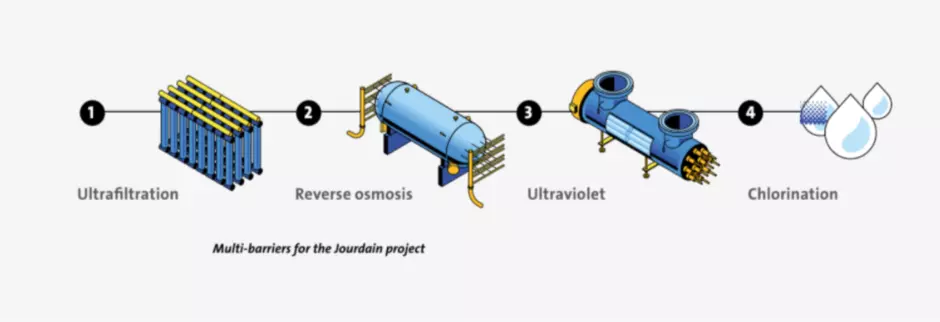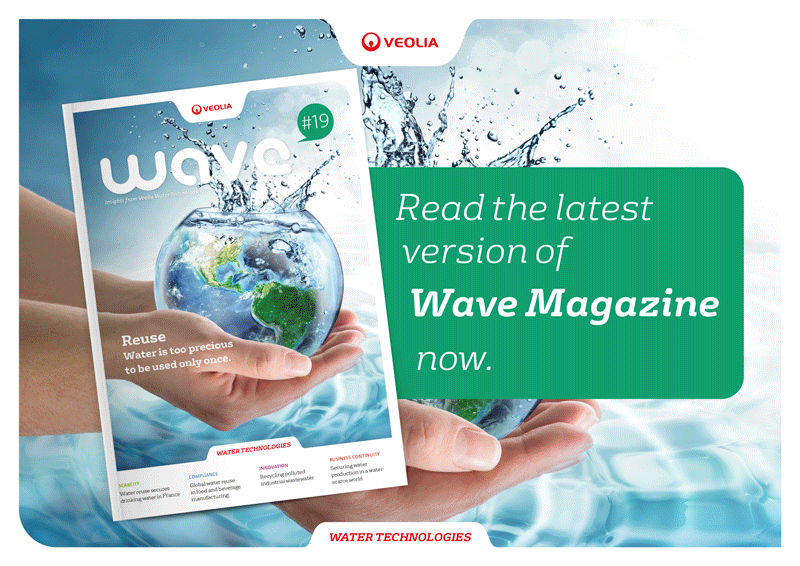Known for its long coastline and sandy beaches, Vendée is now putting surface water augmentation on the map too. A first for France and Europe, the Jourdain Program will reuse treated wastewater for indirect drinking water production.
Located on the western coast of France, Vendée is one of France’s most popular holiday destinations owing to its beautiful coastline, historic towns and picturesque villages nestled in idyllic countryside. However, the region has faced increasing water shortages during hotter months, adding additional strain on tourism, wider industry and residents alike.
For the past 20 years, Vendée has been confronted with severe water droughts. In fact, several conventional investments had been already instated by Vendée Eau — the non-profit public body in charge of water supply — including a very effective water-saving program. Nevertheless, the region was still struggling to make the 50 million cubic meters of drinking water produced per year meet its needs as demand continues to rise.
Additionally, the authorities knew they also needed to counteract the impacts of climate change since the water supply of Vendée is highly dependent on surface water which is more at risk of increased evaporation and convection. Indeed, as a direct result of climate change, projections showed this put an additional 100,000 inhabitants at risk of drinking water shortages during very dry years.
And so, Vendée Eau needed to act... and this is exactly what they did.
Taking inspiration from neighboring countries, Belgium, Spain and Germany who were reusing water for aquifer recharge, Vendée Eau wanted to take this a step further and started investigating IPR for surface water augmentation.
“Considering the large volume of treated wastewater available but then discharged directly in the ocean from a nearby non-coastal touristic zone, indirect potable reuse (IPR) was deemed very interesting to explore,” explains Jérôme Bortoli, Head of Vendée Eau.
The intended reuse scheme in Vendée aims to partly refill the Jaunay reservoir with reclaimed water from the wastewater treatment plants of Les Sables d’Olonne, located 20 km away. “This solution could provide an additional volume of up to two million cubic meters of drinking water; this is half of the storage capacity of the Jaunay reservoir,” explains Bortoli.
The main challenge Vendée Eau faced was that while other countries in Europe have used reclaimed water for aquifer recharge, there is no such reference in France and currently no regulatory framework for surface water augmentation nor for IPR.
Vendée Eau needed to act... and this is exactly what they did.
Bortoli continues: “The practice of indirect potable reuse is not yet covered by the current French — or European — regulation that only authorizes uses for irrigation purposes. This means Jourdain will be the first of its kind in Europe for surface water augmentation and, as such, is carried out by the collective as an open demonstrator for experimentation.”
The Jourdain Program is made up of several infrastructures including a tertiary treatment unit, a 27 km recycled water pipeline, engineered landscaped and wetland area and Vendée Eau has set up a regional governance system.
“The objective is to build the installations and then to acutely monitor the system in operation for three to five years, before deciding whether or not to go for the full-scale program,” adds Bortoli.
The Jourdain Program now has to demonstrate and guarantee that IPR will lead to limited impacts, compliant with all water use: recreational activities and drinking water production.

Furthermore and beyond technical aspects, governance and social issues are prominent. And so, Vendée Eau has launched coordinated actions to raise enforcement, confidence and mobilization at a large scale of stakeholders who need to be involved, from local communities and direct customers of drinking water to national institutions and health services.
This innovative and ambitious program will make it possible to recreate the water cycle in a planned and controlled manner, in order to guarantee the security of the drinking water supply for the people of Vendée.
Vendée Eau began discussions in December 2019 and on July 9, 2021, the contract for the construction of the Jourdain refining unit was signed in La Roche sur Yon, in the presence of Jacky Dallet, President of Vendée Eau, Martin Gutton, Director General of the Water Agency, Antoine Frérot, Chairman and CEO of Veolia Group and climatologist Jean Jouzel.
Vendée Eau is running trials on water reuse as part of its Jourdain Program. This process — reusing treated wastewater by pumping it into waterways upstream of dams in areas that suffer from water shortages — is a first for Europe. Currently, under construction, testing will start in 2023 with full production scheduled for 2026. The technology at the heart of this is the BarrelTM an ultrafiltration and low-pressure reverse osmosis vessel designed by Veolia Water Technologies that contains 200 membrane elements, ultraviolet disinfection and chlorination.
Pascal Playaud, Director OTV West Central Caribbean - Veolia Water Technologies:
“The tertiary treatment unit being used as part of the Jourdain Program addresses a critical need: the reuse of wastewater through one of our latest innovations, the Barrel. This project, through its refining unit, aims not only to provide a reliable source of drinking water for the future but also to reduce the environmental footprint of our customers. And all this, while generating profitability and growth potential for the whole Veolia Group, is a very good example of our multifaceted performance.”



